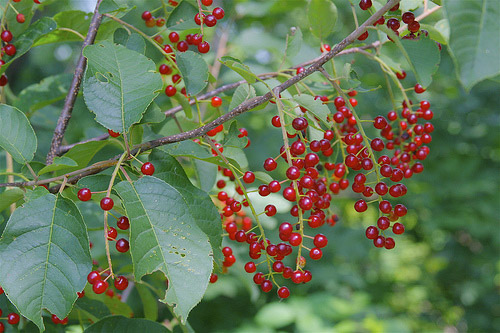
It’s Monday and that time of the week again, time to learn about another plant that can make your horse sick (the list seems never ending already, & it’s only the B’s!). Today a closer look at the Black Cherry Tree with it’s vibrant scarlet red berries.
A Little About Black Cherry Trees
Prunus serotina is the Black Cherry which grows as both a tree and a shrub. This tree has elliptical, leathery leaves which grow alternately, white, fragrant flowers hang in drooping clusters and fruit is dark red/black.
How Dangerous Is It?
Generally horses will find Black Cherry unpalatable so it is a larger concern during drought conditions and during the autumn when leaves fall to the ground and cover the grass. Due to the extreme toxicity of the leaves, these trees & bushes should be removed from grazing areas.
Damaged or wilted Black Cherry leaves are toxic and can be fatal to equines.

What To Look For
You know your animal the best, so you should know when something is amiss. Black Cherry toxicity symptoms can include anxiety, respiration difficulty, lack of coordination, convulsions collapse & even sudden death.
Learn More
Be sure to check out the Black Cherry Tree page to learn more about the plant and while you are at it why not check out more toxic plants?
*It should be noted that I’m not a veterinarian. This information is written specifically for horses and should be used for reference purposes only. If you think your horse has eaten something toxic call your vet right away.

We have black cherry trees on the property we harvest that don’t look like the first photo pictured (the fruit is much larger and not clustered like what’s shown). I’m wondering if this is a term being used for a very different plant? Or, do we need to be concerned about the cherry trees cultivated for human consumption?
Hi Nanette,
They are in the same family & yes cherry trees & most pit fruit trees are dangerous to horses.